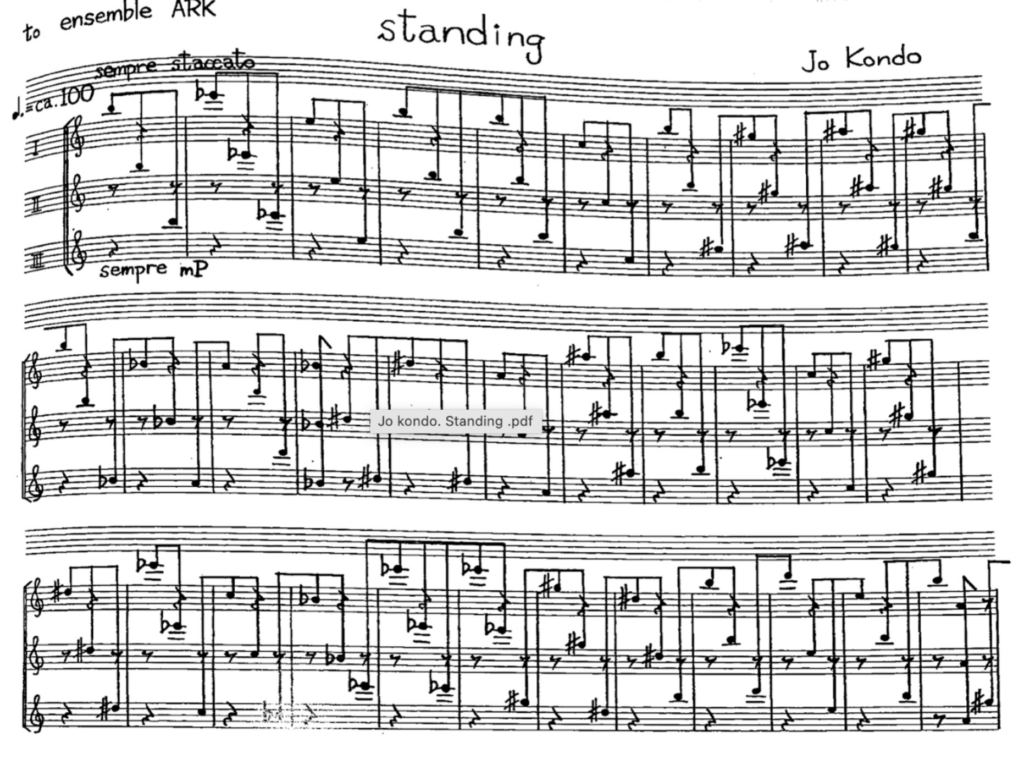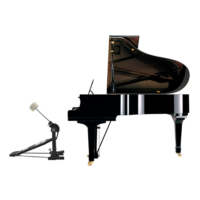Jo Kondo’s music is highly abstract. It often consists of repetitive patterns with small variations, where the general ambiguity of the patterns invites the listener to explore the music. Kondo describes the ideal as a kind of reflective listening. In such music, any form of emphasis, crescendo, or phrasing risks removing the music’s ambiguity, or in Kondo’s own words: “If […] the groupings are too unambiguous, the listener ends up listening only to the resulting structure and falling prey to its expressive effects” (Kondo, 1988). Therefore, in the score, the music is notated simply with sempre mp (always moderately soft) and staccato. Kondo leaves much of what interpretation often involves, such as creating direction and coherence and clarifying causes, to the listener. It is the listener who must determine what, if anything, should be heard together and find or wonder about their cause.
Performed in this way, with all notes at an even tempo, mp, and staccato, the performance for the musicians almost takes on the character of a meditation, or continuous balancing act.

As an experiment, it was decided to perform a more traditional interpretation based on a set of rules that gave the music a more traditional dynamic surface:
a. Whenever the music stayed within three repetitions of a pattern, it was played staccato. If it went beyond three repetitions, it was played legato.
b. Whenever the musicians met on the same note, it was marked by an accentuation.
c. In sections with none of the above conditions, spontaneity, such as sudden changes in dynamics and reactions to them, was permitted.
c. The final section was to be played as a traditional teleological build-up by inserting a subito piano followed by a crescendo.
In other words, we went against the composer’s intention and altered the dynamics, articulations, tempi, etc., which generally created a somewhat dramatic and neurotic atmosphere. One might think of it as a Westernization of the music, falling prey to expressive effects. On the other hand, it could also be seen as an interpretation more in line with traditional classical audience expectations, making it more accessible to them.
Obviously, this raises the question: did we cross the line?
